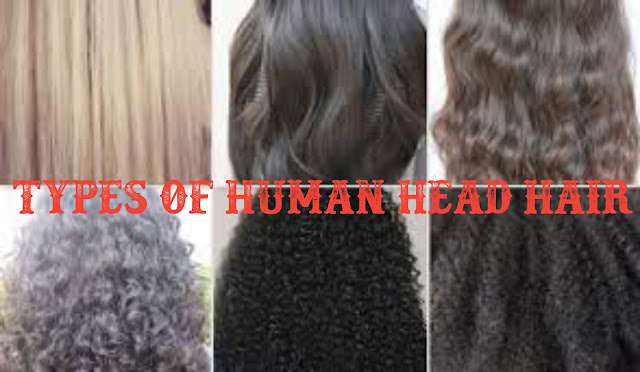10 Different Types of Human Head Hair You Didn't Know Existed
Most people think of hair as hair and not really much else, but there are actually quite a few different types of human head hair that you might not have heard of before, whether because they're rarer or just because you never learned about them in school! This list goes over ten different types of human head hair that you probably didn't know existed, and all of them can be found on the heads of real people right now.
All you have to do is look closely enough!
1) Straight: Straight hair is probably one of the most popular and widespread hairstyles.
Whether you have thick or thin straight hair, it’s easy to maintain, and always fashionable.
Straight hair looks great on long as well as short haircuts.
2) Curly: Curly hair is created when a person’s hair has S-shaped curls that move in a downward direction.
Curly hair can also be more difficult to manage due to its unique appearance; curly-haired people can’t wear their hair back with rubber bands or ponytail holders, so those with curls usually need additional products for styling.
3) Wavy: This is a common hair type, and there are even some celebs that have it.
But, how do you know if your hair falls into this category? The key is in how straight your hair feels when it’s wet and in its natural state.
If you can run your fingers through your hair without issue, it’s probably wavy or straight.
Straight: While these locks aren’t necessarily straight out of bed, they do feel like a broom when damp.
4) Straight Then Curly: One interesting fact about hair is that a single strand has an outer layer, called the cuticle, which can be flat (known as straight) or curved.
A curly hair means that your cuticles are curved; when these rub against each other, it makes strands appear wavy.
Curly-haired people who want to switch to a straighter look should consider using anti-frizz serums and straightening irons.
5) Flat: Your hair type is largely determined by genetics, but what many people don’t know is that your overall health also has a big impact on your hair type.
The hair shaft grows from a follicle, which is attached to your scalp.
Healthy skin promotes healthy hair growth, while unhealthy skin can lead to unhealthy hair.
6) Two textures on the same head: Wondering why someone’s hair looks different from day today? It might be because of their texture.
There are many types of human head hair, and people usually don’t realize that they have more than one on their heads.
For example, most women with curly hair also have some straight hair; they are just harder to see.
Knowing all these types can help you determine how your locks will behave in any given weather or style.
7) four different textures on one head: Scientists classify human head hair by texture.
Usually, these textures are further subdivided into finer categories such as wavy, curly, and kinky hair.
The purpose of classifying human head hair by texture is to help predict how a person's head hair will grow, react to styling methods and products, and appear.
Currently, there are five main types of human head hair: straight (also known as fine), wavy (also known as a medium), curly (also known as coarse), kinky (also known as tightly coiled), and fuzzy.
Each type has its own unique characteristics. However, within each category, there are two sub-categories: strong/rigid or weak/flexible.
8) Kinky texture mixed with straight texture: Kinky texture mixed with straight texture, or type 4c hair, refers to hair that is somewhere between 2c and 4b. On average, it’s curly at the root, but straighter at the end.
There’s a lot of variation in type 4c hair—it may be very curly (4b) near your face and mostly straight lower down on your head.
9) I can't decide which way to go with texture: There are two main types of hair growth patterns you'll see in humans: anagen and catagen.
On average, men tend to have more anagen hairs than women (1.2 million per square inch versus 0.8 million per square inch), which is why they often appear to have thicker hair on their heads.
Anagen hairs can last anywhere from two to eight years, although some will only last a couple months before falling out—in general, it's believed that around 10% of our hair is growing at any given time.
So if you were born with stick-straight locks that haven't been touched by curling iron or flat iron in your life, it could be because all your hair growth is happening above your shoulders!
10) Fluffy texture mixed with straight texture: It’s been suggested that having fluffy hair makes it easier to handle different hairstyles, such as long hair or short hair.
If you’re looking for a hairstyle with volume, fluffy texture mixed with straight texture is an ideal match.
A perfect combination of waves and curls: It has been said that women with wavy and curly hair are more creative and better communicators.

Comments
Post a Comment